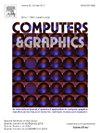每一步的信任:在基于机器学习的临床决策支持系统的可视化数据探索循环中嵌入信任质量门
IF 2.8
4区 计算机科学
Q2 COMPUTER SCIENCE, SOFTWARE ENGINEERING
引用次数: 0
摘要
机器学习(ML)的最新进展支持医疗保健中的新应用,最显着的是临床决策支持系统(CDSS)。缺乏信任阻碍了接受,也是临床实践中成功实施数量有限的主要原因之一。可视化分析通过为数据科学家和医疗保健专业人员(hcp)提供多功能交互和可视化,支持开发值得信赖的ML模型。然而,通过可视化分析对hcp建立对ML模型的信任的具体支持仍未得到充分探索。我们提出了一种扩展的可视化数据探索方法,以增强对基于ml的医疗保健应用程序的信任。在文献综述的基础上,我们分析了CDSS可信度的新主题及其影响。通过引入映射到可视化数据探索循环的信任质量门,我们为多学科团队提供结构化的检查点来评估和建立信任。我们在三个实际用例中演示了该方法的适用性——策略开发、可行性测试和模型优化——强调了其在医疗保健领域推进可信ML的潜力。本文章由计算机程序翻译,如有差异,请以英文原文为准。

Trust at every step: Embedding trust quality gates into the visual data exploration loop for machine learning-based clinical decision support systems
Recent advancements in machine learning (ML) support novel applications in healthcare, most significantly clinical decision support systems (CDSS). The lack of trust hinders acceptance and is one of the main reasons for the limited number of successful implementations in clinical practice. Visual analytics enables the development of trustworthy ML models by providing versatile interactions and visualizations for both data scientists and healthcare professionals (HCPs). However, specific support for HCPs to build trust towards ML models through visual analytics remains underexplored. We propose an extended visual data exploration methodology to enhance trust in ML-based healthcare applications. Based on a literature review on trustworthiness of CDSS, we analyze emerging themes and their implications. By introducing trust quality gates mapped onto the Visual Data Exploration Loop, we provide structured checkpoints for multidisciplinary teams to assess and build trust. We demonstrate the applicability of this methodology in three real-world use cases – policy development, plausibility testing, and model optimization – highlighting its potential to advance trustworthy ML in the healthcare domain.
求助全文
通过发布文献求助,成功后即可免费获取论文全文。
去求助
来源期刊

Computers & Graphics-Uk
工程技术-计算机:软件工程
CiteScore
5.30
自引率
12.00%
发文量
173
审稿时长
38 days
期刊介绍:
Computers & Graphics is dedicated to disseminate information on research and applications of computer graphics (CG) techniques. The journal encourages articles on:
1. Research and applications of interactive computer graphics. We are particularly interested in novel interaction techniques and applications of CG to problem domains.
2. State-of-the-art papers on late-breaking, cutting-edge research on CG.
3. Information on innovative uses of graphics principles and technologies.
4. Tutorial papers on both teaching CG principles and innovative uses of CG in education.
 求助内容:
求助内容: 应助结果提醒方式:
应助结果提醒方式:


